 W
WThe coat of arms of Ukraine is a blue shield with a gold trident. Officially referred to as the Princely State Symbol of Volodymyr the Great, or, colloquially, the tryzub, the insignia derives from the seal-trident of Volodymyr, the Grand Prince of Kyiv.
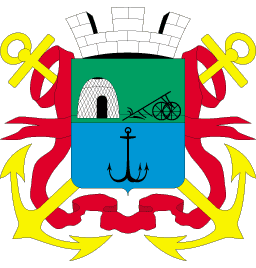 W
WThe Coat of Arms of Berdiansk is based on a similar version adopted in 1844. It features a shield per fess with azure and vert. In the upper part is an azure covered wagon and a sable plough which signify the half-nomad life of the Nagaysky settlers in the district. In the lower part is a sable anchor that symbolizes the port and the sea. The shield is crowned with an argent mauerkrone with three embattlements, on top of two or anchors connected by the gules ribbon".
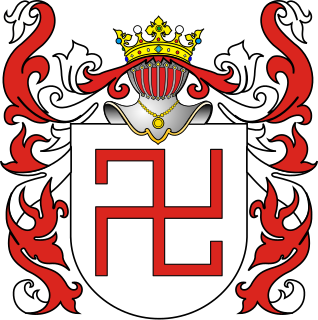 W
WBoreyko is a Polish coat of arms. It was used by several szlachta families in the times of the Polish–Lithuanian Commonwealth.
 W
WThe coat of arms of Carpatho-Ukraine is the official heraldic Coat of arms of Zakarpattia Oblast in Ukraine. The coat of arms was initially adopted on 30 March 1920 along with coat of arms of other lands of Czechoslovakia. The Ukrainian version of the arms was adopted on 18 December 1990 as a revived coat of arms by Hungarian graphic artist Janos Reiti.
 W
WCossack with rifle, sometimes as Knight with rifle or Cossack with musket is a former national emblem of the Cossack Hetmanate. In 20th century it was the official national emblem of Ukrainian State.
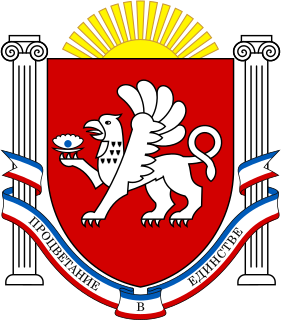 W
WBoth the Ukrainian Autonomous Republic of Crimea and the Russian Republic of Crimea use the same coat of arms, which has been in use since 1992.
 W
WGliński is a Polish coat of arms. It was used by several szlachta families in the time of the Polish–Lithuanian Commonwealth.
 W
WCoat of arms of Ivano-Frankivsk is an official symbol of the Ivano-Frankivsk city. The current one was adopted on February 17, 1995.
 W
WThe Coat of arms of Kharkiv is the official coat of arms of both Kharkiv city and Kharkiv Oblast.
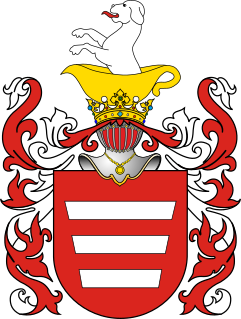 W
WKorczak is a Polish coat of arms. It was used by several noble families of Clan Korczak in the times of the Kingdom of Poland and the Polish–Lithuanian Commonwealth.
 W
WThe coat of arms of Kyiv features the Archangel Michael officially named as "Saint Michael the Archistrategos", wielding a flaming sword and a shield on an azure field.
 W
WOstrogski is a Polish coat of arms of the Polish–Lithuanian Commonwealth. A variant of the Leliwa and Ogończyk coat of arms.
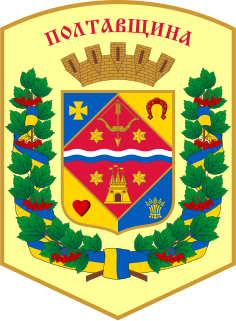 W
WThe Coat of arms of Poltava Oblast is the official coat of arms of Poltava Oblast.
 W
WThe Ruthenian lion, Ukrainian lion, or Halychian lion is a golden lion on an azure background. The coat of arms of the Kingdom of Rus, the Ruthenian Voivodeship and the Western Ukrainian People's Republic. Usually, he was depicted as stocky, less often — walking, crowned, with silver or red weapons; such that it rests on a gold or silver rock. The oldest images appear on the seals of n rulers from the XIV century — Yurii I of Galicia, Leo II of Galicia, Yurii II Boleslav, Vladislaus II of Opole. In the XV-XVI centuries the lion was present on the large seals of Kings Władysław II Jagiełło, Alexander Jagiellon, and Sigismund II Augustus as a symbol of Rus, along with the Polish eagle, the Lithuanian pahonia, and the Prussian eagle. As a voivodship emblem of Lwów Land in the form of a lion on a rock known since the XV century. Beginning with the Revolution in the Austrian Empire in 1848, he became one of the political symbols of the Ruthenians (Ukrainians) and the Ukrainian national liberation movement. In modern times it was perceived as the coat of arms of the western Ukrainian lands with the center in Lviv, mainly Halychyna. He was depicted with the emblems of Ukrainian military formations of the twentieth century — the Ukrainian Sich Riflemen (1914-1918) and the 14th SS-Volunteer Division "Galicia" (1943-1945). Since 2009 he has been one of the supporter of the project of the large coat of arms of Ukraine. It is used as a coat of arms in Ukrainian and Polish heraldry, in particular on the coats of arms of Lviv, Lviv Oblast, oblast raion, Częstochowa, Subcarpathian Voivodeship, etc. The colors of the coat of arms are the colors of the state flag of Ukraine — yellow (gold) and blue.
 W
WSas or Szász is a Central European coat of arms. It was borne since the medieval period by several Transylvanian-Saxon Hungarian, Ruthenian, Ukrainian, and Polish-Lithuanian noble families. The house was once a mighty princely and ducal house with origins in Saxony, Transylvania, Hungary and Ruthenia.